
M.A. Haris Firismanda was the magister student of Literature and Cultural Studies, Airlangga University.
Adnan Guntur published a collection of plays. He titled this publication “Body at 11:11”. This work was published by Pagan Press. Adnan compiled five play titles. “Eyes” is one of the titles that is intriguing for a deeper review. This work features a narrative with a forward and backward movement. It also implies a story about the life of urban society.
The narrative is embedded in the symbolism of body and time. These two symbols depict human life thrown into the daily world (lebenswelt). This causes both entities to become the central narrative in this play. The body is depicted as stopping amidst the whirl of time. Because of this, the body experiences an absence within itself.
Implicitly, absence and cessation are part of the modern human (subject) being thrown into their life. Moreover, urban society has been devoured by time due to being very busy. The exploration of symbols in Adnan’s script also provides meaning over the completeness of existence bound by time.
Besides, the script does not show a clear division of characters. The story is driven only by the figure of a Narrator. Their presence seems to hold three roles at once. The narrator acts as both the antagonist, protagonist, and mediator in the story. Their presence is very ambiguous and holds uncertainty in character and position within the story.
Centralizing characterization in the narrator makes the script’s exploration very broad on stage. This means, the director can choose one or even more players depending on the stage needs to fulfill the characterization in this story. Further interpretation of the narrator in this script allows readers to interpret more deeply from the narrator’s point of view as the driver of the story.
Moreover, from the three divisions of character roles, each has its conflicts and tensions. The narrator character positions their effort to achieve self-fulfillment towards the body, namely “Eyes”. However, they must confront the character from the antagonist’s perspective to claim that part of the body. Besides, the time, at 11:11, marks a cessation as a manifestation of incompleteness.
On the other hand, the narrator driving from the mediator’s perspective instead provides a kind of reflection on positioning through that body organ, and time with a religious view. They represent a condition that exists in absence except for the return to God. This gives meaning that the body (eyes) and time are a form of incompleteness.
The resolution of conflict in the script is concluded with the main character finding the “eyes”. However, this also provides reflection on the character’s subjectivity towards a value on its completeness. They attempt to show acceptance towards the position of the body as ownership of another, namely God.
Furthermore, the subject narrator character is also faced with a kind of darkness dimension. This dimension is marked by their non-existence following 11:11—as a representation of rush hour symbol. Therefore, the narrator character then reinterprets their body organ as the starting point of seeking God.
Further reflection from the script “Eyes” provides a view on the life of urban society experiencing an unfree condition due to time control. Besides, eyes as a body organ cannot be separated from time. Both are intertwined. However, the script shows symbolic symptoms of the subject’s condition shackled by the material world.
On one hand, this materiality becomes the departure point of the subject towards non-existence in empty space. On the other hand, the analogy of body organs like eyes and time symbolized by 11:11 is interpreted as the poet’s effort to capture the human condition shackled by the urban social structure dimension. From here, humans are likened to time machines that continuously move in their non-existence towards their original body.
The script “Eyes” implies a relationship between the body and time. Both intertwine, leading the subject to be thrown into their everyday world. There is a paradox stored between 11:11 and the stopping body. Among the hustle and bustle of people, the subject tries to reflect on themselves. It is a transcendental effort within themselves to escape the shackles of time.
Therefore, this script holds a deep reflection on human life, especially urban society. Because they have been occupied with activities and work. Humans no longer reflect on themselves as human beings. They are just like gears among the machines of industry.
In short, this work aims to deliver a wake-up call to modern humans. The Poet attempts to invite readers or audience members to reflect again on their existence amidst their dissolution.

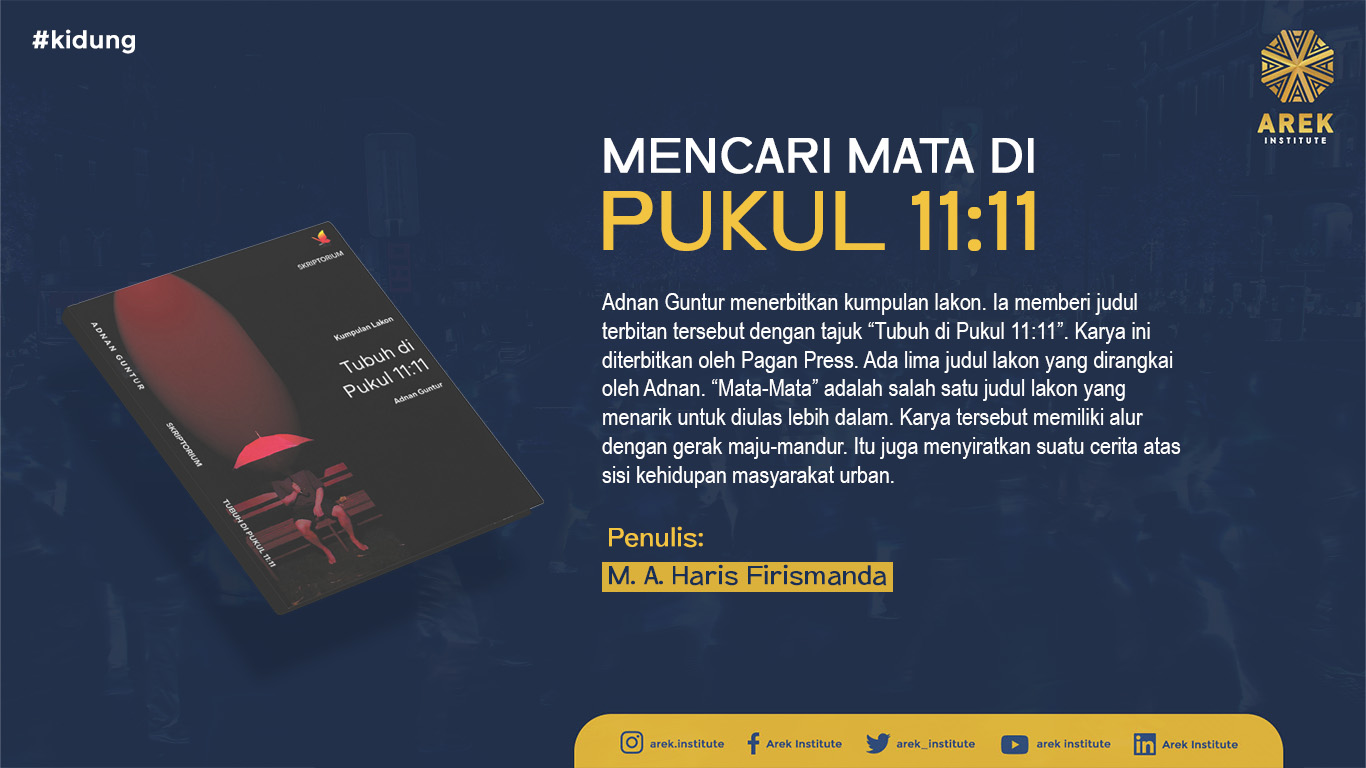

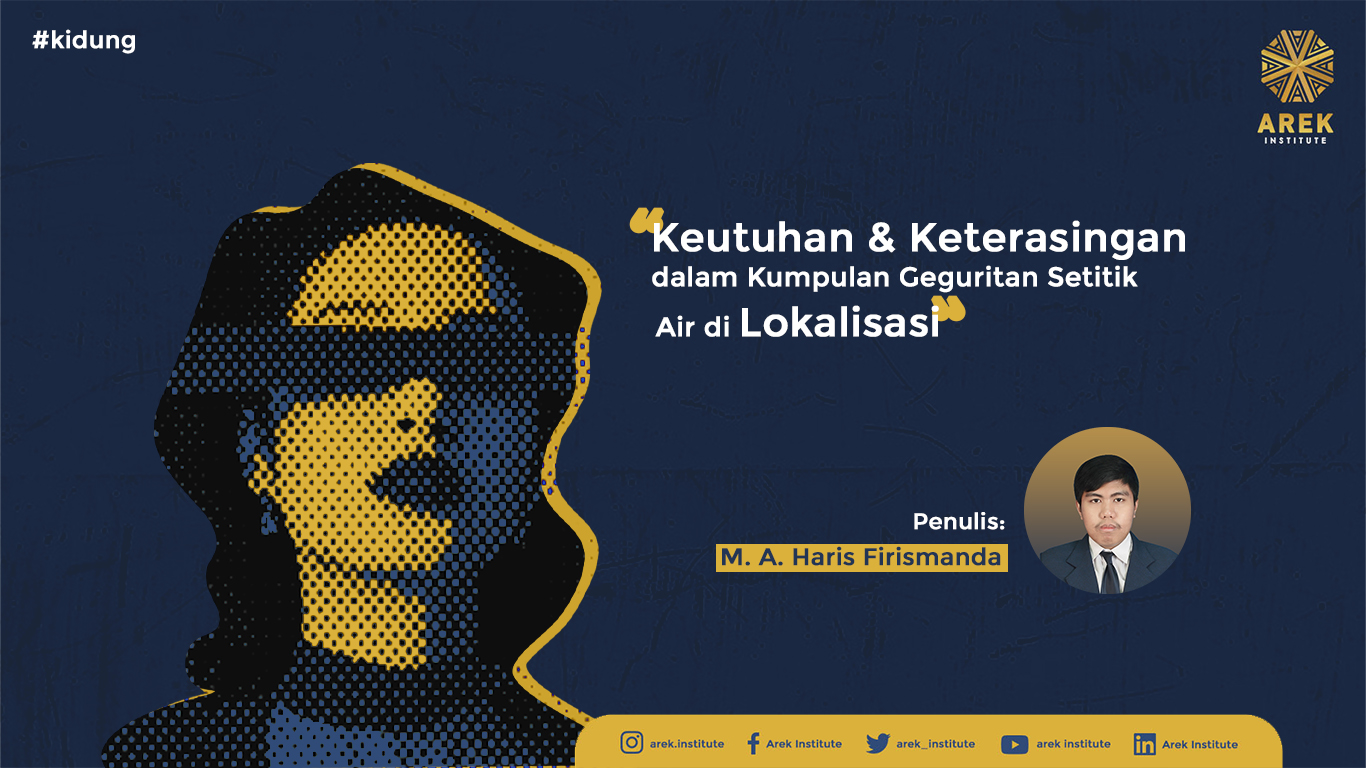
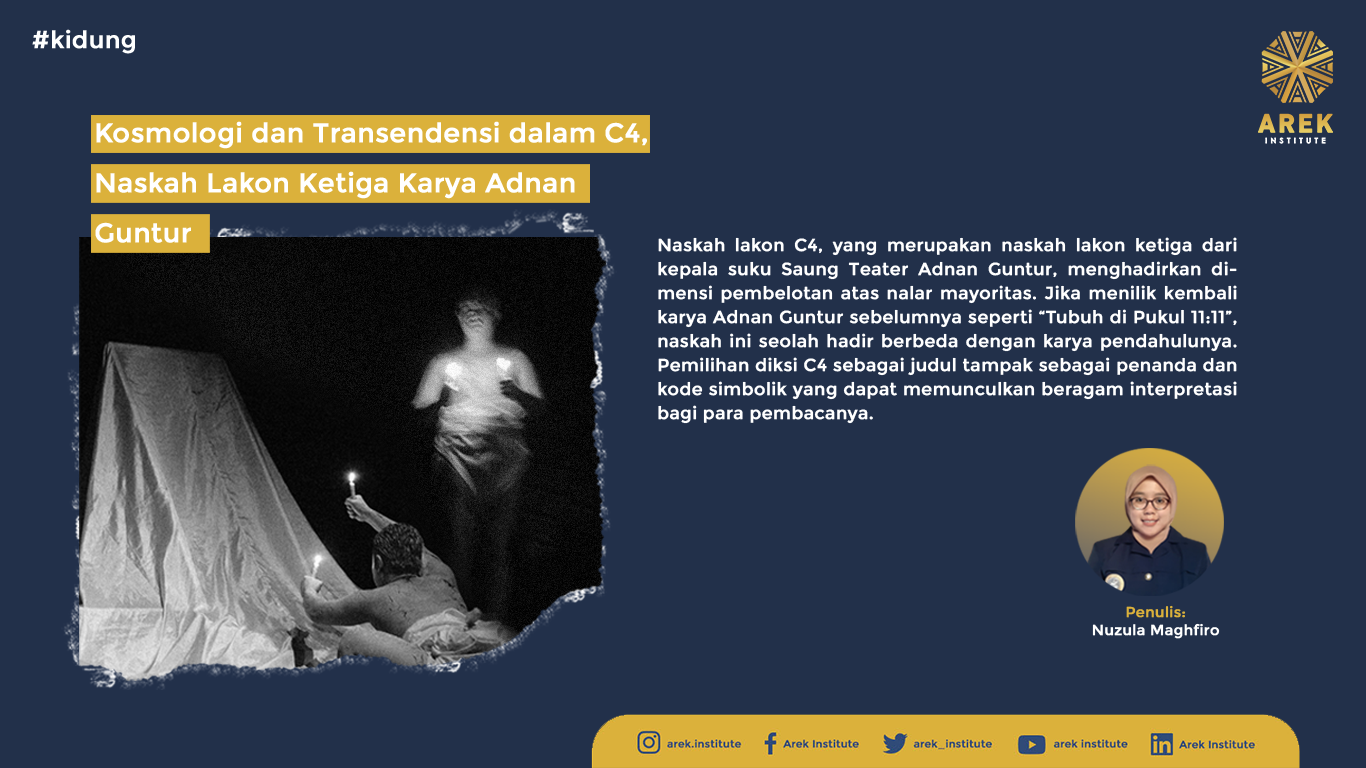
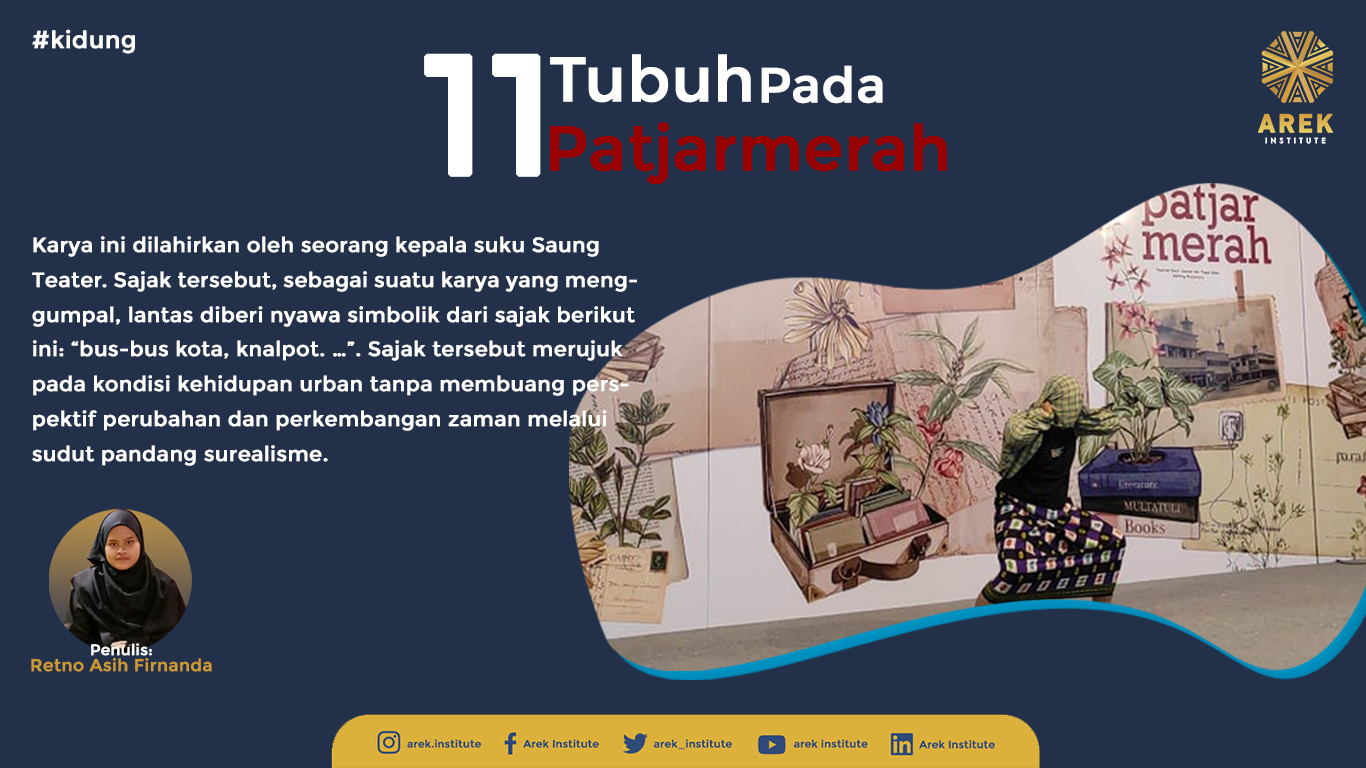
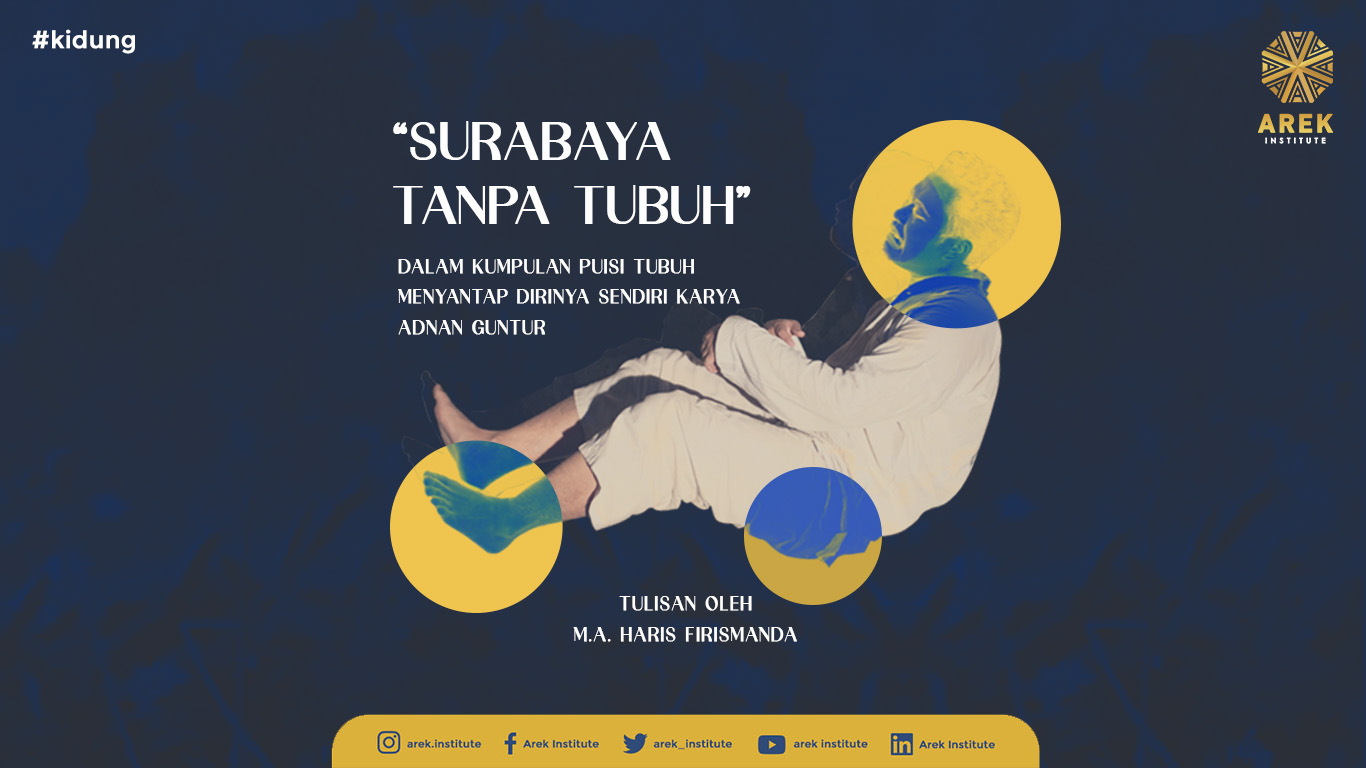
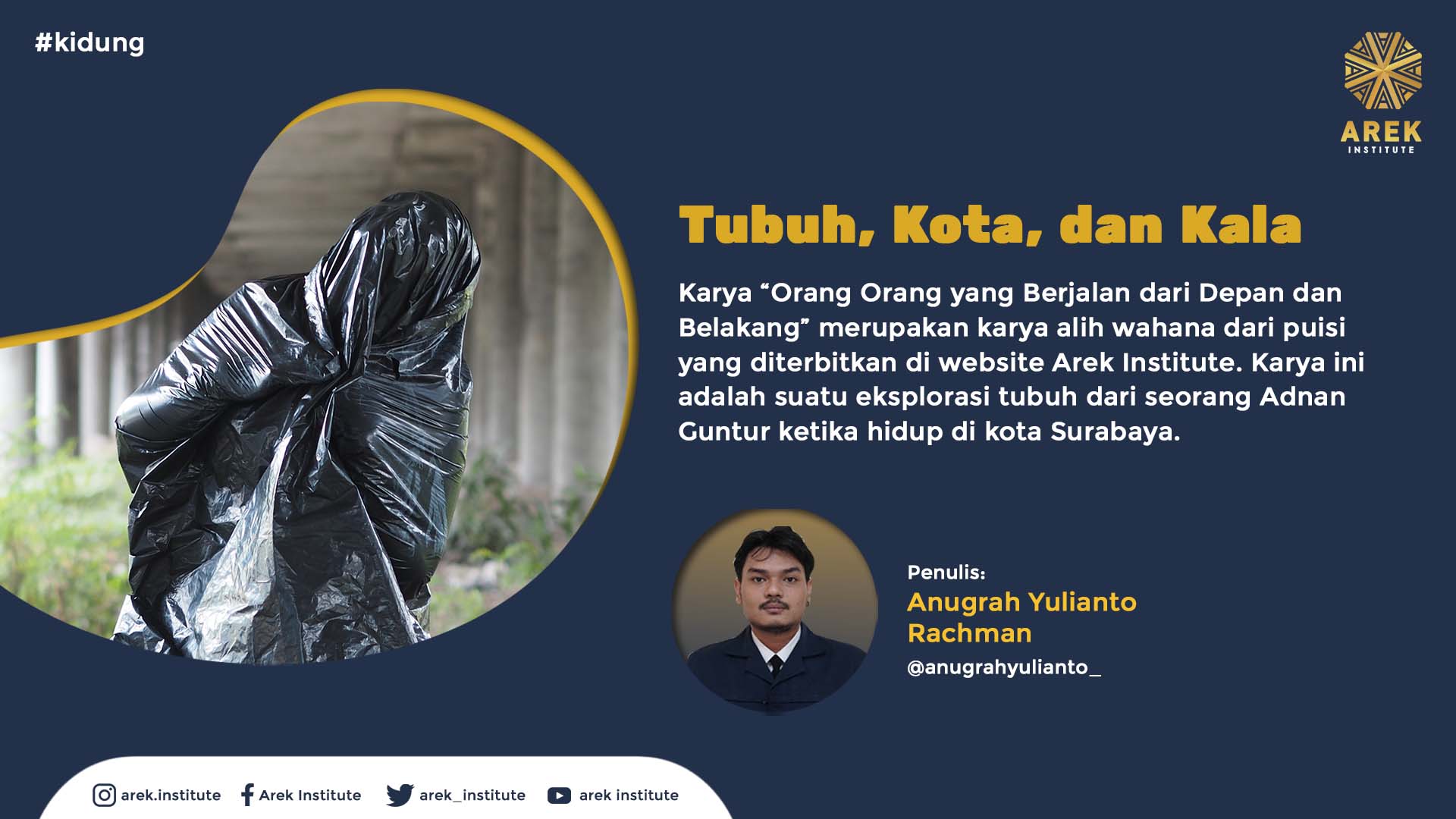
0 Comments